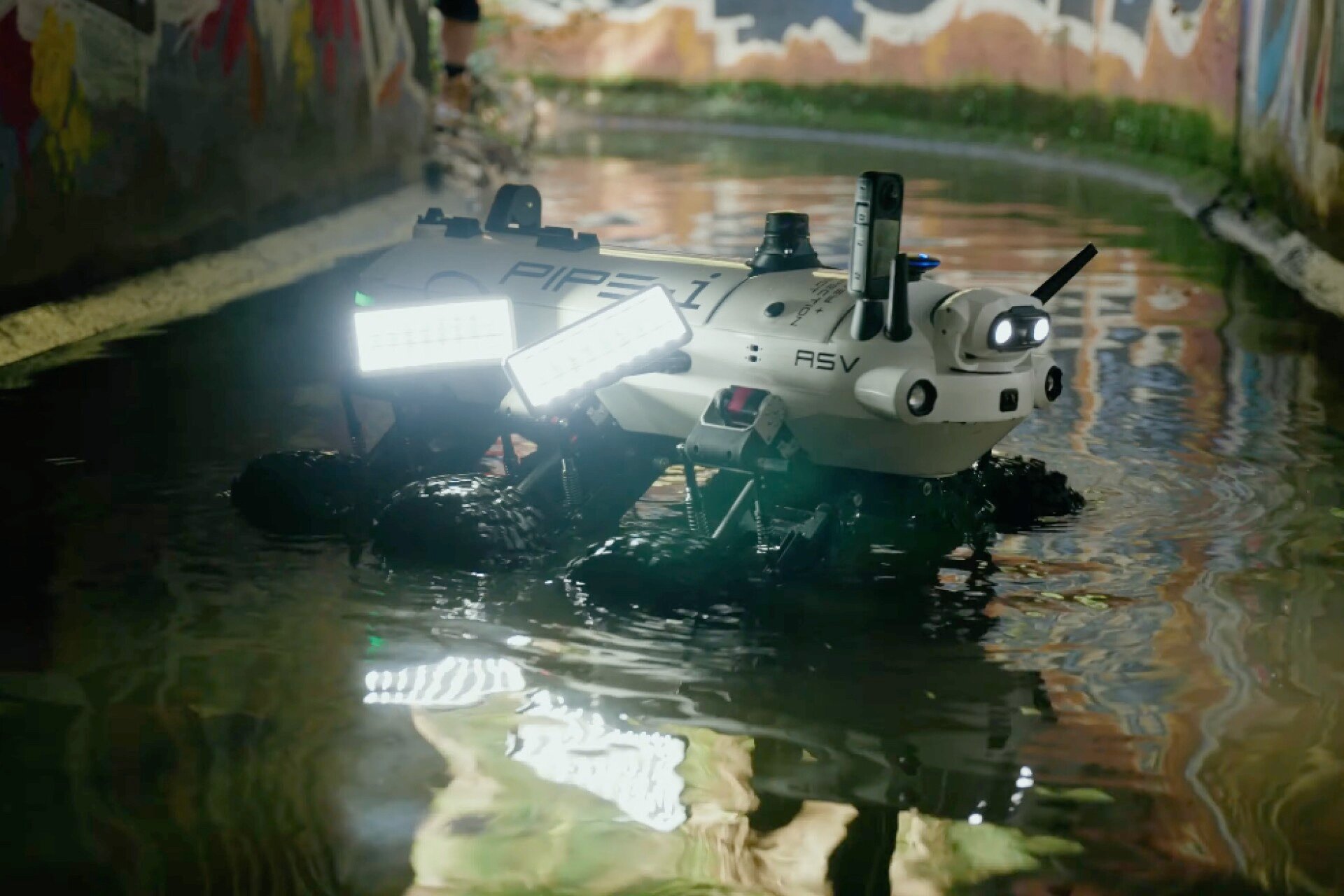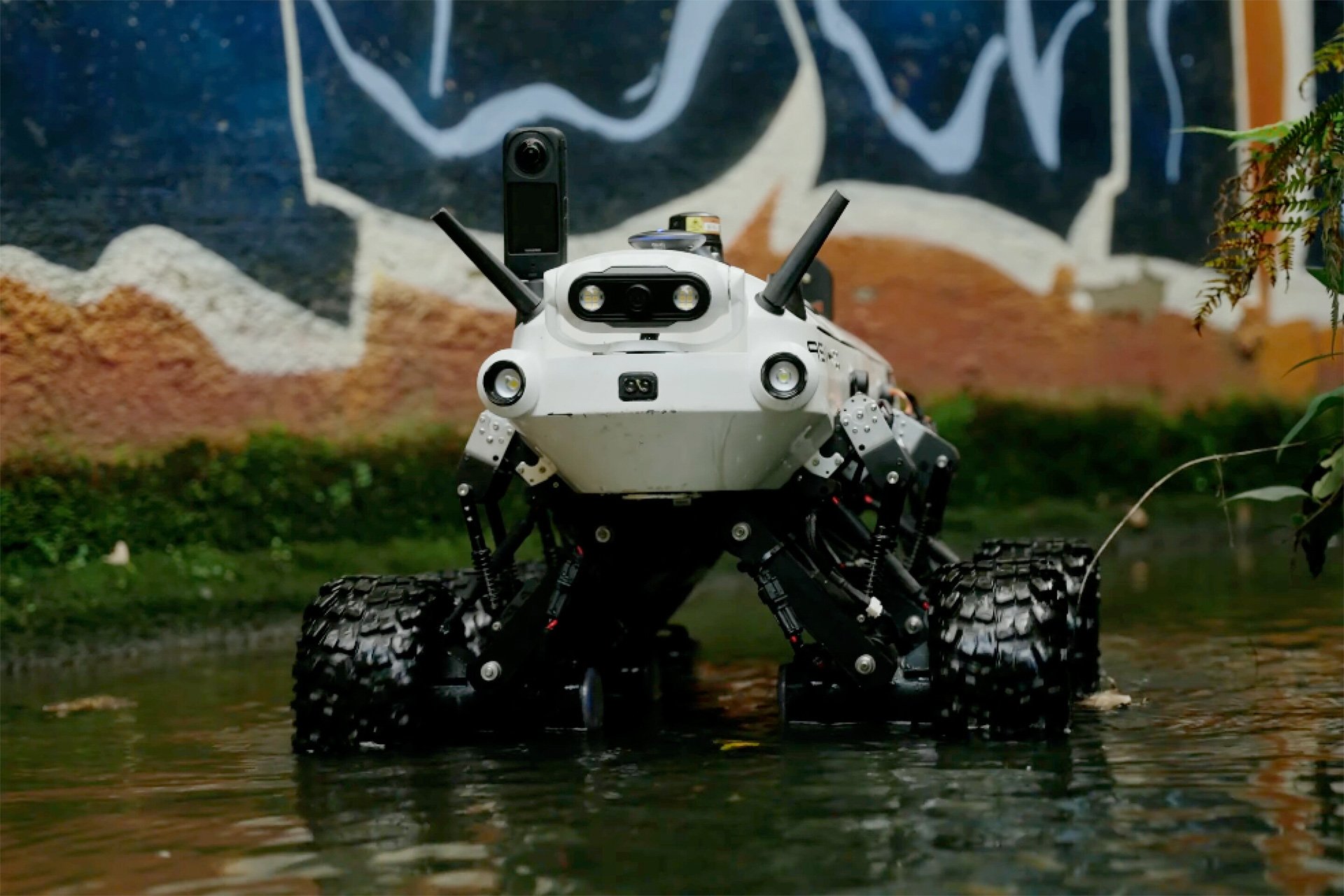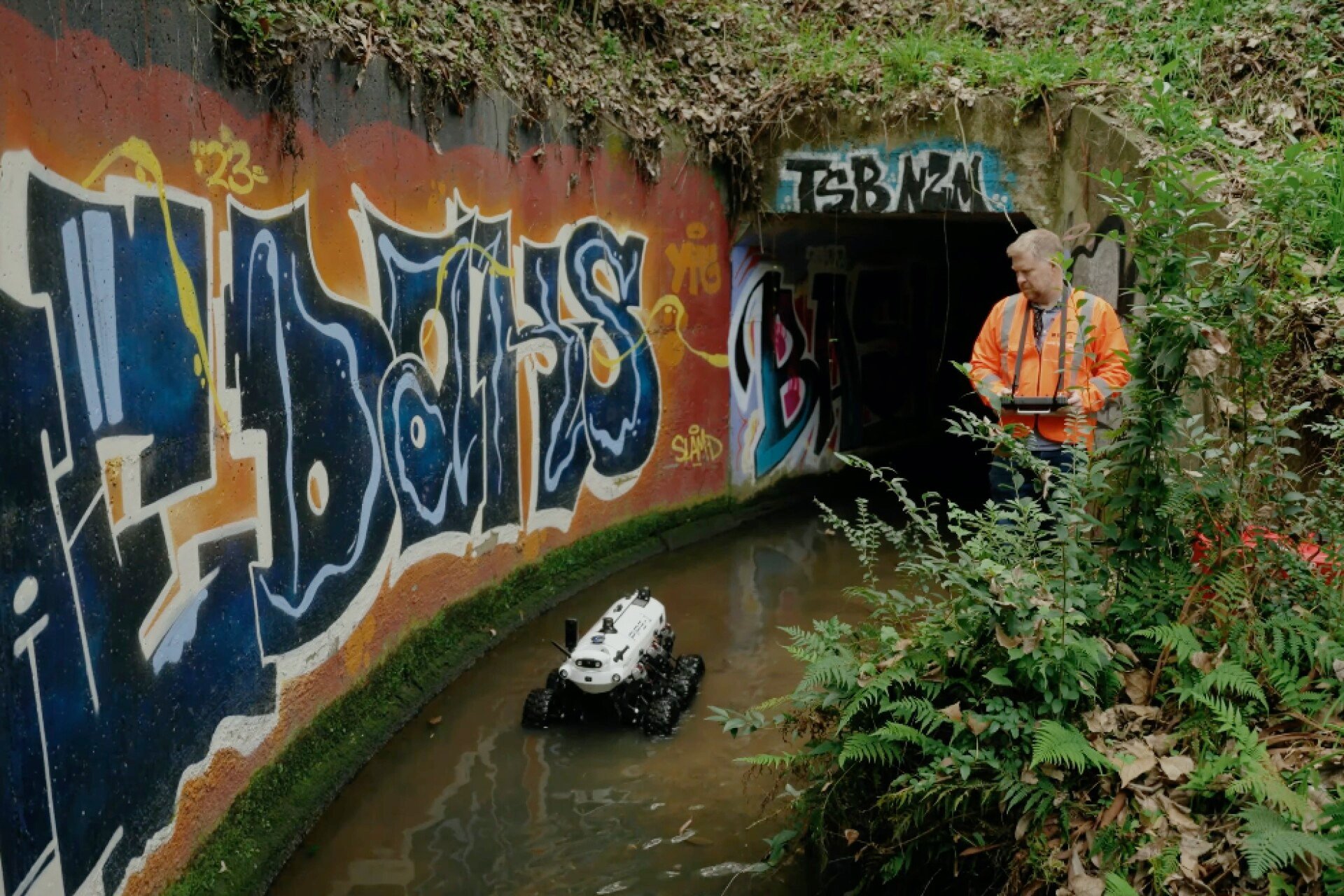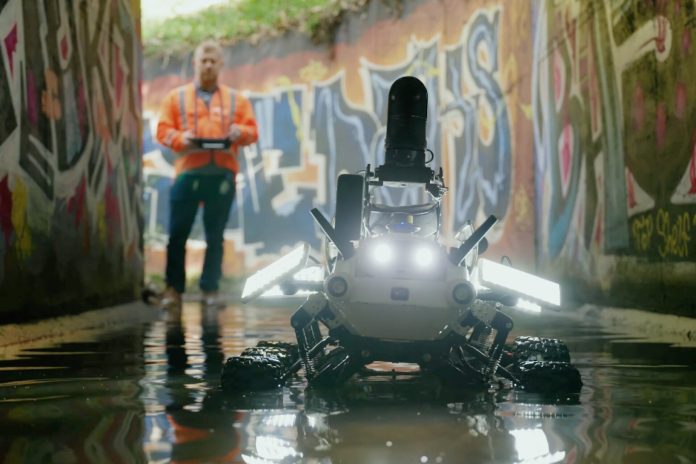Inspecting stormwater culverts has long been a hazardous task due to risks like collapsing ceilings, submerged obstacles, and accumulations of toxic gases. To address these dangers, New Zealand engineering firm Beca has developed the PIPE-i robot, a six-wheeled device designed to inspect culverts without putting human lives at risk.
Developed over a one-year period from June 2022 to June 2023, the PIPE-i was conceived when Beca’s structural engineers were assigned to survey a severely cracked and deformed culvert beneath a busy highway. Finding that existing commercial solutions were inadequate for the task, the engineers decided to create a custom robot capable of navigating and inspecting such challenging environments.
The prototype of the PIPE-i features a robust design, utilizing a 3D-printed polycarbonate and carbon fiber body for durability. It is equipped with six individually suspended wheels, allowing it to traverse uneven terrain within culverts. For illumination, it carries four 850-lumen LED panels, ensuring clear visibility in dark environments.
To capture detailed visuals, the robot is fitted with a pan/tilt forward-facing camera, providing operators with a live video feed for real-time navigation and inspection. Additionally, a LiDAR sensor assists in obstacle detection and navigation.

One of the key components is a Leica BLK360 3D scanner, which stays protected inside a lidded compartment at the back of the robot when not in use. The scanner can be deployed as needed, flipping up to perform comprehensive scans of the surrounding culvert and generating detailed 3D point cloud models for further analysis.
Currently, the PIPE-i is controlled via radio in real time, utilizing the live camera feed for navigation. While it can perform certain functions autonomously, such as proximity sensing, future plans for the commercial model include integrating AI algorithms to enhance its autonomous capabilities.

Operators can not only inspect culvert conditions through the live video feed but also analyze the detailed 3D models produced by the onboard scanner after the inspection. For even more comprehensive visual data, the robot can be equipped with an omnidirectional camera to capture 360-degree video footage.
An additional feature of the PIPE-i is its adjustable suspension system. This allows the robot to raise its body for optimal scanning positions or lower itself to navigate under low overhead obstacles, enhancing its versatility in various culvert conditions.

By employing the PIPE-i robot, inspection teams can avoid the inherent dangers of entering unstable culverts while still obtaining detailed information necessary for maintenance and repair planning. With continued development and the integration of advanced autonomy, the PIPE-i represents a significant advancement in remote inspection technology for infrastructure maintenance.
Source: Beca



